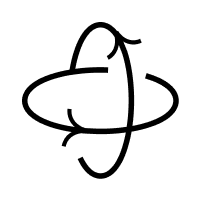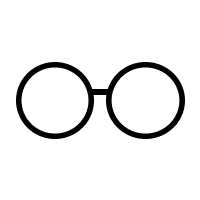Kiluanji Kia Henda is exhibiting at M
“I am showing four works at M. Three of them, ‘The Geometric Ballad of Fear’, ‘Isle of Venus’ and ‘Mare Nostrum’ refer to the migration crisis. They are my way of dealing with the tragedy that is occurring on the Mediterranean Sea. The suffering, the misery, the death. And how Europe reacts to it.”
Harmony and fear
“‘The Geometric Ballad of Fear’ is a series of nine photographs, of which three are being shown at M. The idea developed when I was an artist in residence on the Italian island of Sardinia. The sea never brought good news there. The island’s history is one long succession of invasions. And migration is now also considered to be a comparable danger.”
“The photos were taken at the coast and always facing the sea. I placed patterns on the photos. They are inspired by the trelliswork that people in Angola hang in front of their windows and doors, to protect themselves against outside dangers. To me, the work is very strong aesthetically; you see the harmony in the form. But there is something darker behind the design: fear.”
“The work is also inspired by the walls that are built to stop migrants. In Morocco, for example, there is one in the Spanish enclave Melilla. It is very iconic for Europe, which is turning itself into a fort to stop migrants.”
A new island
“‘Isle of Venus’ is more about the impact of migration. About all those thousands of people who die every year on the Mediterranean Sea while they attempt to reach Europe. To me, every new boat that sinks is a new island. On these islands, I place little statues of Venus from classical European art, wrapped in condoms. Condoms have a double meaning to me. They protect you, but at the same time they ensure that you can no longer procreate. Many places in Europe are closed in this way… To me, it is a continent that is inhibited by its own history. Everything is heritage, everything has to be preserved, and new cultures have no place in that.”
“Look at Angola. It is an African country, but I was taught Portuguese, our religions came with the European colonizers… If you shield yourself off like that, if you are so closed to the cultures of other people, you own culture will die. The only way for culture to flourish is to interact with other cultures.”
Black birds
“‘Mare Nostrum’ is a large-scale work. The name literally means ‘Our Sea’, an ancient Roman name for the Mediterranean Sea. I made it in Arles, in the South of France. There are enormous salt piles there, which were extracted from the Mediterranean Sea. I covered parts of them with an enormous black sheet. This sometimes resulted in abstract figures and sometimes in something that looked like black birds. They refer to the natural human urge to migrate. You see that urge everywhere, not only in Africa. It is in our DNA and has always been there.”
“Europe and Africa both have an equal responsibility for the migration crisis. In Africa, we have problems with corruption and wars. But the influence of the West has always been very significant – including in those wars and that corruption. The tragedy on the Mediterranean Sea is the result of disastrous political decisions. Mare Nostrum aims to make you reflect more deeply about everyone’s share in those political decisions.”
Desert town
“The fourth work, ‘Paradis Metallic’, is a video installation that we made in the Middle East in 2014. The film tells the story of a man who keeps trying to establish a city in the desert. Everything goes wrong and nature hinders him, but he eventually manages to erect a kind of skeleton of a city. For me, the work is about the human urge to conquer more and more land without respecting nature. It also reflects on entropy: sooner or later, everything falls apart. People create structure, but ultimately everything descends into chaos.”
“There is also a link with the three other works: the illusion that you can create your own paradise somewhere else.”
A second Dubai
“I have been interested in architecture since I was a teenager. Fortunately, I ultimately decided to study art because as a result, I have more freedom now. But my interest has always remained. Luanda, the city of my birth, has undergone a massive transformation over the past few years. Enormous shiny, reflective skyscrapers have been built all over the place. Real estate developers wanted to make it a second Dubai, but without taking into account what people in Luanda really needed. The end result is a complete disaster. Big business has appropriated all of the buildings with one main goal: money laundering. They disregarded the primary purpose, the very raison d’être of architecture: to make a home for people. That really moved me. It is perverse that people look at building projects and only see money. And that certainly does not only happen in Angola. You also see it in the Middle East, China, America, Europe... You find empty buildings everywhere, and even empty cities. If you were to add up all these square metres, you would have one big concrete desert. That is why I made ‘Paradise Metallic’ in the desert. There is a parallel between the emptiness of the desert and the emptiness of those abandoned urban projects.”
Here and now
“I see myself as someone who grew up in a Christian family, of black heritage but with a European grandfather. A puzzle of pieces that are spread across various places, various continents. If I want to understand who I am, I have to look further than the here and now. Angola was colonized for centuries, and over the course of its history had links to many other places. One third of the Africans who were taken to America as slaves came from Angola – about four million people. Those facts continue to have their effect. History does not belong to the past.”
“And things that happen in the world elsewhere have an impact on Angola and on me. And on you. I do not divide places on the basis of geographic distance of borders. That is not how the world works. That is the central part of my message as an artist: improving communications, shortening distances. We are beginning to realize more and more that we are all connected. Whatever happens, and wherever it happens: it has an influence on us all.”
“The relationship between the West and Africa would benefit from improved communications. We must respect one another and look one another in the eye as equals. And understand that there are different cultures, ways of living, and ways of thinking. That might bring change, including in politics. I believe in culture and in art because it is an open form of communication. I profoundly believe that this is a way to change things and break open boundaries.”
“Humour also helps. Artists use a whole range of strategies to get people’s attention. I have great respect for colleagues who are direct, who can shock people, but my strategy is often humour. Many of my subjects are very serious. People do not always want to be confronted with this and they find it difficult to talk about. Humour can make these themes accessible.”
Reading up
“M Leuven has a mixed collection: contemporary art and old Masters. I think it is wonderful that my work will be exhibited in a context like this. Perhaps it will inspire people to reflect on time and history. They can compare old works and new works. See the differences, but also the similarities.”
“I would advise people who come to my exhibition to read about it. Everyone has their own history and interprets things in their own way. That is a good thing. But I would also like them to understand what I want to say.”
From 21.02 until 30.08 at M mleuven.be/kiahenda. Reserve your timeslot now.
Curator: Eva Wittockx





